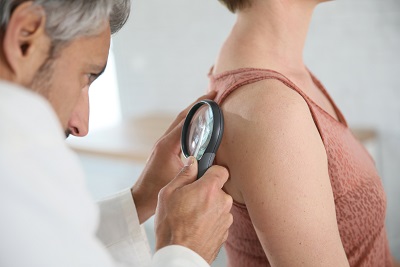PCP, patient reports of skin exams, patient charts, rarely align
Click Here to Manage Email Alerts
There was significant discrepancy between patient-reported full-body skin exams, physician reports of these exams, and documentation of the exams in patient charts, according to study findings presented at the American Academy of Dermatology annual meeting.
“Full-body visual skin exams are among the most safe, fast, cost-effective methods of skin cancer prevention and early detection; however, dermatologists only see a fraction of the population,” Natalie Matthews, MPhil, of the department of dermatology at the Warren Alpert Medical School of Brown University, told Healio Family Medicine.
Researchers asked 53 physicians to report on how frequently they conducted full-body visual skin exams. Matthews and colleagues then asked 1,394 of the physicians’ patients to report if their back, abdomen and calves had been examined and the amount of clothes removed for the exam. Patients’ charts were also reviewed to see if the full-body skin exam was performed.
Survey results included:
- Provider/chart agreement on occurrence of a full-body skin exam was less than 10%;
- Provider/patient agreement on occurrence of calf exams was 31%; for the abdomen and back, about 54%;
- Chart/patient agreement on occurrence of abdomen and calf was less than 50%; for the back, 50%;
- Provider/patient agreement with patient being fully undressed during the exam was 40%; for a patient being fully dressed, 26%; and
- Patient/chart agreement with reports on the amount of clothes removed during an exam was about 30%.
“Our results may reflect differences in interpretations of the full-body skin exams between PCPs, patients and dermatologists, and limitations of patient awareness of physician activity,” Matthews said in the interview. “For example, if a physician was listening to breath sounds, the patient may have interpreted that as only a pulmonary exam, when in fact the PCP was also examining the patient’s skin on her/his back.”
She said requirements for full-body skin exams should be standardized and the criteria for reporting such exams in medical records needs to be used more carefully.
“Ideally, a PCP should clearly narrate the exam so that the patient is aware that the physician is examining her/his skin. This is also an excellent opportunity for the physician to engage in skin cancer prevention counseling,” Matthews continued.

She added that the number of melanoma cases are growing nationwide, so PCPs “must join” dermatologists in conducting full-body skin exams of patients, and recommended that PCPs not comfortable doing so consult ‘The Internet Curriculum for Melanoma Early Detection.’– by Janel Miller
Reference: Matthews NH, et al. “Discrepancies in melanoma screening reporting between patient, physician, and patient chart.” Presented at: American Academy of Dermatology annual meeting; Feb. 16-20, 2018; San Diego.
Disclosure: Healio Family Medicine was unable to determine authors’ relevant disclosures prior to publication.

